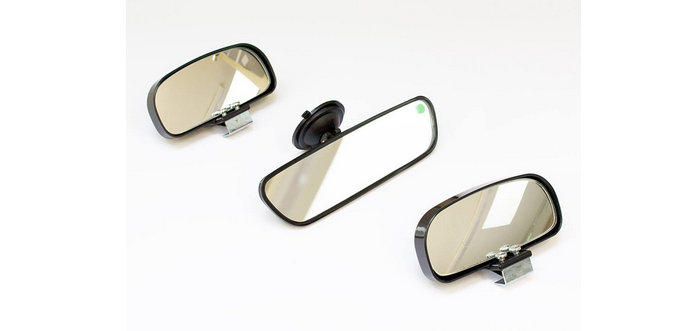How to position your rearview mirror for ADIs
10/09/2020
The ability to clearly see what is happening all around on the road as an ADI and learner driver is vital. As the old adage goes, assume every other road user is a risk.
A key part of having a clear vision of the cars, objects or people around the car is dependent on positioning your mirrors correctly. If the rear mirror is not properly adjusted, you could be missing things in your blind spot and thereby compromising the safety of your car and others on the road.
In contrast, a properly positioned rearview mirror plays a big role in properly guiding your learner driver as they turn, slow down, stop, accelerate or switch lanes. You also have to remember that learners are looking at what you are doing and will inadvertently pick up on your practices – make sure they pick up safe driving practices.
Why Is It Important to Have a Properly Positioned Rear View Mirror?
Cars today have many features geared towards enhancing their safety. One such feature that probably goes unnoticed is the rear-view mirror. Mirrors, in general, are essential tools fitted in a car with the express objective of broadening your view of what is happening around the vehicle. It is also important to note that, under the UK Highway Code, all ADIs are required to have an instructor mirror in the car for their safety.
Although it might seem like common sense, it is very important for you to learn how to best position your mirrors - particularly the rear-view mirror. After all, you are not interested in seeing aeroplanes, birds, or your car. To start with, you should adjust the position of the mirrors before you put the vehicle into gear or move. Some people try to adjust their mirrors on the road while driving but this is extremely dangerous and what most would term as distracted driving. You do not want to note that your rearview mirror is not properly positioned when you need it most, as it might just be too late.
Before turning, slowing down, switching lanes, accelerating or joining up with a motorway, a driver needs to check their mirrors and confirm that they are clear of any danger. In most cases, you need to help the learner scan the environment and having a properly positioned mirror ensures that your guidance is well informed. In other words, you do not have any blindspots.
For example, if a learner needs to slow down to make a turn or change lanes there could be a car on the lane you wish to get on or behind you in the lane you are in. by checking your rearview mirror, you will pick up on the possible danger and appropriately advice the learner to hold off on the turn or any other action as you deem fit. In this case, a possible crash is avoided by simply looking through your rear-view mirror in a second or less and making the right judgment.
While in traffic, the rear-view mirror comes in very handy. It helps you make sure that the drivers behind you are maintaining a safe distance just in case you need to make an emergency stop. And if they are not, knowing that there are approaching cars behind you gives you a better insight on how to manoeuvre the situation if anything happens.
However, all this only makes sense if your rear-view mirror is well-positioned to see as much as possible without any distractions.
How Should You Position Your Rear-View Mirror?
An ADI needs to at least have a rough idea of what the best mirror position is from the passenger seat to ensure that the learner is keeping a good eye on their surroundings. On the same note, you should ensure that you know the best position of your instructor mirror.
As you would expect, every learner will have a different optimal seating position because of their height or preference. As such, the ideal mirror position is down to experience rather than an exact science. That said, several general guidelines should help you find the ideal position. As a rule of thumb, you want to see as much as possible without any blind spots.
Therefore, adjust your mirror in such a way that you all of the back window or at least as much of it as possible with the least possible head movement with a slight bias towards your left ear.
You also want to make sure that you can see only a minimal amount of the car interior and that you can see the road behind you in the centre of your rear-view mirror. Another thing to remember is that if your rear-view mirror is manually adjustable, avoid touching the glass as this could leave fingerprints marks that could distort your view. Finally, the correct mirror setting is really up to you and if you cannot see as much as you need, adjust it.
View our range of ADI official mirrors which are approved for use in UK driving tests.

